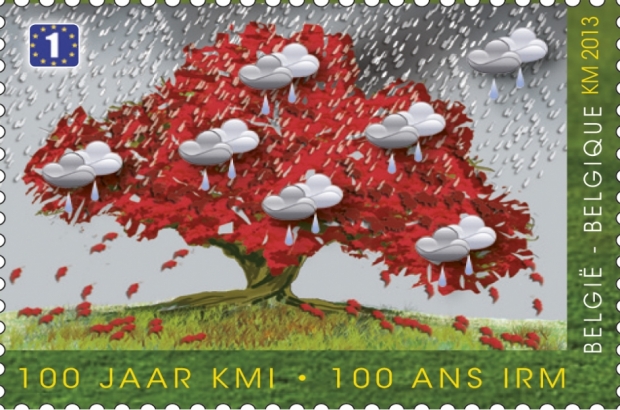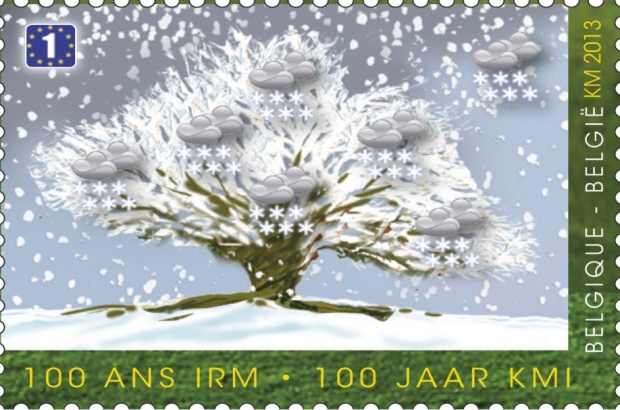- Daily & Weekly newsletters
- Buy & download The Bulletin
- Comment on our articles
Come rain or shine: the Royal Meteorological Institute
Like most of those in Europe, Belgium’s Royal Meteorological Institute (RMI) has its roots in the national observatory. As technology rapidly improved towards the end of the 19th century, scientists, who would later call themselves meteorologists, were starting to investigate the lowest part of the sky – that inconstant, sub-lunar world where chaos rules over order.
The original motive of setting up a national meteorological office wasn’t to inform the public whether they could expect showers or a sunny sky. The Belgian government saw the foundation of a met office as a necessity to keep early airplanes and zeppelins in the air and to better assist the military. So on July 31, 1913, King Albert I signed the royal decree that split up the Royal Observatory of Belgium and gave birth to the RMI.
Only a year after the RMI began, the first weathermen had to give up, as the First World War broke out. Over the next four years, the Germans allowed no activity to be undertaken at the RMI; they had their own meteorologists to make forecasts for their army. So the war threw a serious spanner in the RMI’s development, and that of Belgian meteorology in general. In almost every other country involved in the war, the met office was heavily funded because of the strategic importance of a reliable weather forecast. After the war, the RMI, based in the Brussels district of Ukkel, began all over again.
Fortunately, in Jules Jaumotte, it had a director who didn’t shirk. In 1919, Jaumotte – who was a pilot during the war and a pioneer in aerial photography – went to an international meteorological conference in Paris. There he met Vilhelm Bjerknes, a Norwegian meteorologist often considered the father of modern weather forecasting.
Jaumotte and Bjerknes became close friends, and the staff at the RMI became acquainted with the meteorological knowledge of the so-called Norwegian school; Bjerknes introduced now-familiar concepts like weather fronts, cold and warm air currents and depressions to the field of meteorology. By the mid-1920s, the Brussels met office had caught up with weather forecasters in the UK, France and the Netherlands.
Jaumotte also encouraged research among his staff. In 1927, thanks to his efforts, the RMI was already able to launch numerous weather balloons, each one equipped with a 'meteorograph' – a device for recording temperature, air pressure and humidity. The balloons were pulled back and released again several times a day and delivered real-time information about the spatial and temporal distribution of atmospheric currents above Belgian territory.
But the Second World War caused another setback. During the German invasion of Belgium, several air torpedoes struck the institute’s hill in Ukkel, resulting in numerous casualties. Jaumotte was among the victims. Soon after the attack, the RMI was again taken over by the Germans. Just as in the First World War, the occupiers stole all the scientific equipment, meaning the RMI had to, once again, start over after the liberation.
This time, the UK’s met office came to the aid of its Belgian colleagues. With help from the Royal Air Force, a ground station for radio measurements was installed in Uccle. From then on, the RMI was able to measure nearly all the relevant atmospheric parameters by sending radio waves into the sky. This meant the immediate retirement of those pre-war weather balloons.
The 1950s and ’60s brought intense modernisation of the RMI’s equipment. This was a time of unbridled technological progress, in which the World Expo came to Brussels (in 1958) and the Atomium was inaugurated. The RMI moved into its new offices (still on the hill in Uccle), control rooms and research labs
Early innovation
But the real eye-catcher during this period was a new human-sized machine in the heart of the control centre. Indeed, the Belgian met office was one of the first meteorological institutes in the world to have a weather computer. Thanks to this machine, the RMI made numerical weather forecasts every day – not only predicting that the next day would be warm, but also just how warm.
Furthermore, in 1969, Belgium was the first country in the world where aerial probes registered the amount of ozone in the lower layers of the atmosphere. As time went by, the RMI increasingly began to take on the extra task of monitoring the atmosphere – not just the weather.
The science of weather forecasting also kept improving in the decades that followed, culminating in 1997 with the launch of the ambitious ALADIN weather model. This allows the RMI to make very specific weather forecasts in every square kilometre of the country.
And in 1999, more than 50 years after the institute had abandoned the weather balloon, RMI scientists took part in a balloon race around the world. From behind their computers, they piloted Swiss balloonist Bertrand Piccard in his Breitling Orbiter 3 around the world in 20 days.
This article was first published in Flanders Today






















